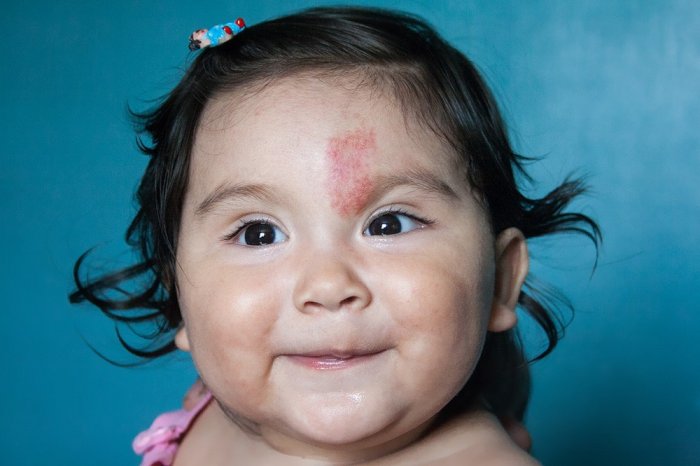Birthmarks What You Need to Know from U.S. Dermatology Partners
Understanding Birthmarks & Treatment Options
Birthmarks are common, benign skin conditions, and for the most part, their only negative effect is to mar the cosmetics appearance of the skin. If you or your child have a birthmark that causes you concern, a dermatologist can examine it to ensure it isn’t a more serious skin condition and provide treatment to remove or diminish the appearance of the birthmark. On this page, you can learn more about the different types of birthmarks and the available treatment options.
Find This Service Near You
What are Birthmarks?

Who Develops Birthmarks?
Birthmarks are frequently occurring skin irregularities. Certain types of birthmarks (strawberry hemangioma, deep hemangioma, port wine stains, and salmon patches) are caused by irregular blood vessel formation. Moles and café-au-lait spots will develop when the skin produces a large number of melanocyte cells in one, concentrated location. Another type of birthmark, nevus sebaceous, is caused by overgrown skin
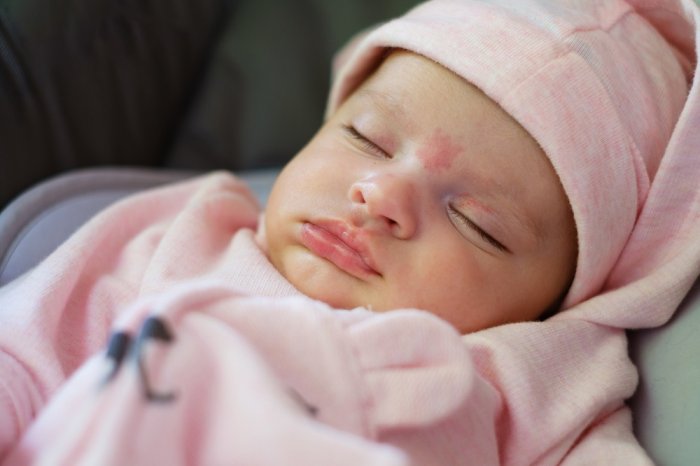
- Premature birth
- Low birth weight (less than 5.5 pounds)
- Multiple-child births (twins, triplets, etc.)
- Women
- Caucasians, especially those with very pale skin
- Genetics
These factors may indicate a higher risk for a child to develop a birthmark, but there’s no way to predict or prevent birthmark development. In addition to these commonalities that may indicate a higher risk of developing a birthmark, we think it’s important to list some of the commonly held causes of birthmarks that are actually myths.
Birthmarks are not caused by:
- Mothers ignoring cravings for certain foods or not eating enough of certain foods
- Moms eating too much of the wrong types of foods
- Mothers and others touching the belly too much
- Moms sustaining injuries during pregnancy
Are there Different Types of Birthmarks?
There are numerous types of birthmarks, and each has its own unique appearance.
Some of the many types of birthmarks dermatologists see regularly include:
Strawberry Hemangiomas

Deep Hemangiomas
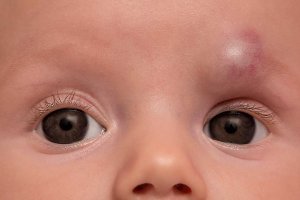
Salmon Patches
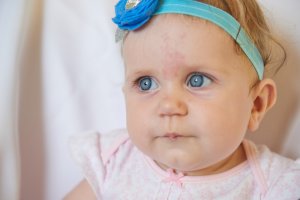
Café-Au-Lait Spots
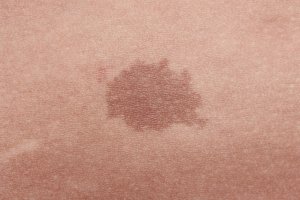
Congenital Nevus

Congenital Dermal Melanocytosis

Port-Wine Stains
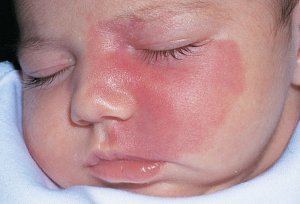
Nevus Sebaceous

White Spots

Venous Malformations
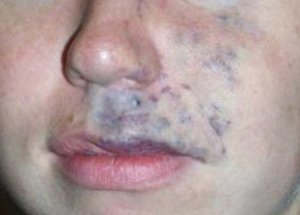
What Treatments are Available for Birthmarks?
It’s understandable that when a rapidly growing and changing spot appears on your child’s body you would be concerned, but most birthmarks are completely harmless and require no treatment from a medical standpoint. However, certain types of birthmarks are indicative of something more serious going on inside the body, so it’s always best to have birthmarks checked by a dermatologist. This will set your mind at ease and ensure that you know right away if the birthmark needs medical treatment.
When a dermatologist examines an infant’s birthmark, they will note the type of birthmark, the location on the body, the size of the birthmark, and any other findings that suggest the birthmark is associated with a more widespread condition. If your infant or young child has numerous birthmarks or shows signs of venous malformations and other concerns, the dermatologist may recommend more advanced testing, including bloodwork, x-rays, and CT scans, to rule out potential whole-body health issues that may be indicated by these clusters of birthmarks.
Treatment recommendations will vary based on the type of birthmark. Typically, your dermatologist will make one of the following recommendations:
- Monitoring – if the birthmark isn’t painful or likely to cause problems, the dermatologist will recommend keeping an eye on the birthmark and seeking treatment if a concern arises.
- Medications – propranolol, a heart medication, has proven effective in stopping hemangiomas from growing and has been especially beneficial in promoting healing and preventing health issues associated with strawberry hemangiomas around the eyes. Timolol, a topical medication with the same effect as propranolol, has proven effective in shrinking some hemangiomas. Less often oral or injected corticosteroids may be used to shrink hemangiomas.
- Interferon Injections – this is an aggressive treatment that involves giving your child a daily injection, and it is not recommended unless a potentially dangerous birthmark is not responsive to more conservative treatments like corticosteroid injections.
- Laser Treatments – for cosmetic removal of noticeable port-wine stains, café-au-lait spots, congenital nevi, and other birthmarks that impact the skin’s surface, laser treatment may be effective in removing or reducing the visibility. Laser treatments may be used alone or with medication to treat hemangiomas.
- Surgery – if a birthmark is potentially dangerous, we may surgically remove it, but this is only done when serious health risk is involved.
- Sclerotherapy – for venous malformations, sclerotherapy may be recommended. This treatment is used to correct the flow of blood through the veins, and will usually correct the appearance of the birthmark.
*Results may vary by individual

